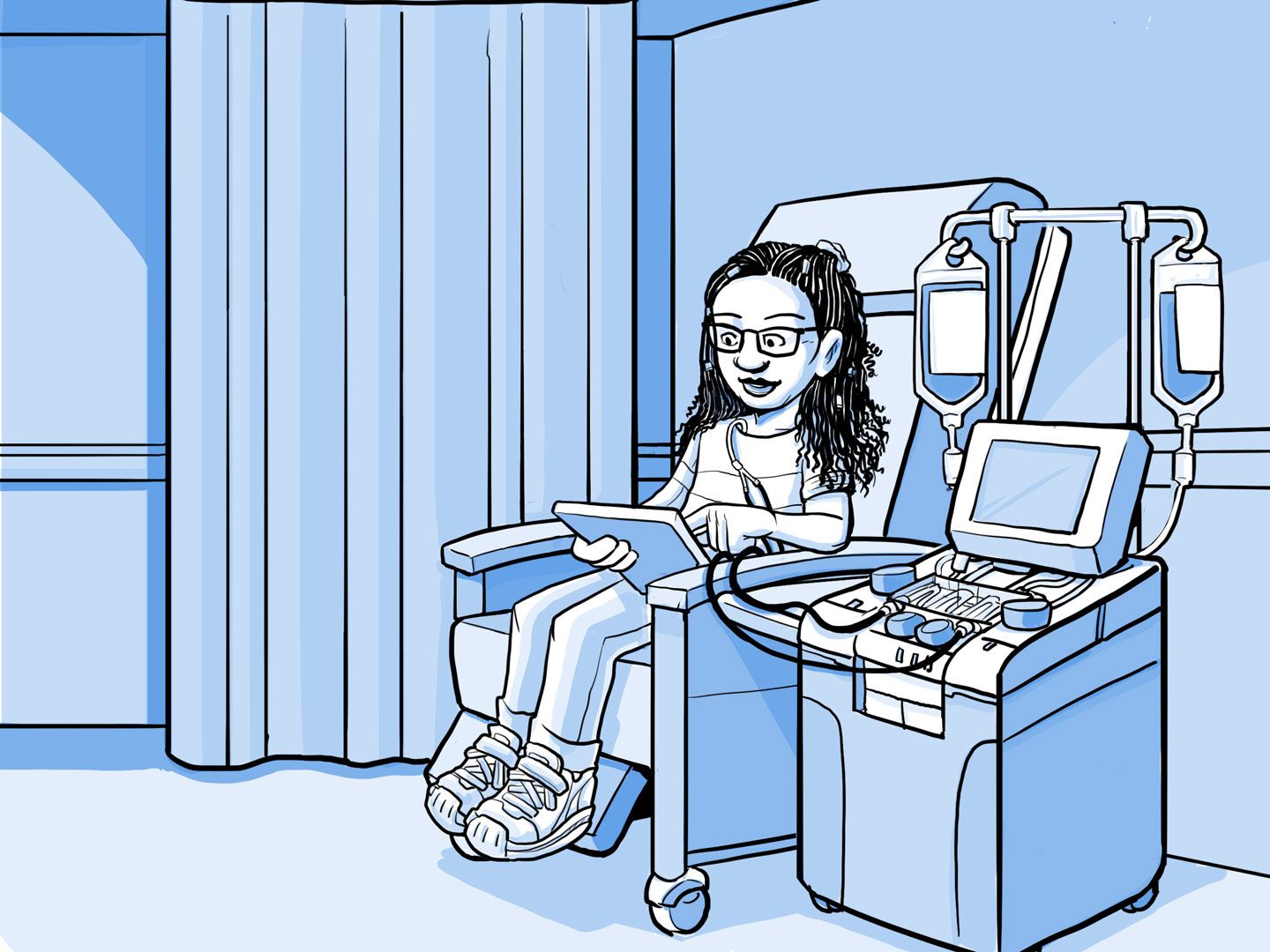Month 3
Nia is 13
Month 3
Nia is 13
Nia comes back for the next blood transfusion.
You will receive blood transfusions for 2 to 3 months to prepare for collection of blood-making stem cells for gene therapy.
- Some people need more time than that.
- Most people receive a blood transfusion once a month.
- The number and interval are different for everyone.
There are different types of blood transfusions.
Your doctor will talk to you about which one you need.
Simple transfusion:
- It takes 2 to 3 hours.
- It is not surgery. You will be awake.
- Healthy red blood cells are added to your blood.
Exchange transfusion:
- It takes 3 to 4 hours.
- It is not surgery. You will be awake.
- Sickle cells are removed, and healthy red blood cells are added to your blood. It is also called a “red blood cell exchange.”
You may need a central line or an IV tube for the transfusions.
- A central line is a thin flexible tube that is placed in a large vein in the neck, chest, or groin area.
- It is also called a central venous access catheter.
- It makes it easier to draw blood and give medicine.
- People can sometimes have a pain crisis when a central line is placed in their body.
Your stem cells need to rest.
- Sickle cells die quickly. Your blood-making stem cells work hard all the time to replace them.
- Your doctor will collect your blood-making stem cells to do gene therapy.
- Your blood-making stem cells need to be strong and ready.
Transfusions add healthy red blood cells to your body.
- In a simple transfusion, you get healthy red blood cells from a donor.
- In an exchange transfusion, your blood goes through a machine that separates it into parts (red blood cells, white blood cells, platelets, and plasma). Before the machine returns your blood, it removes sickle cells and adds healthy red blood cells from a donor.
Hydroxyurea is stopped, so your stem cells can grow.
This is because Hydroxyurea can stop blood-making stem cells from growing.
